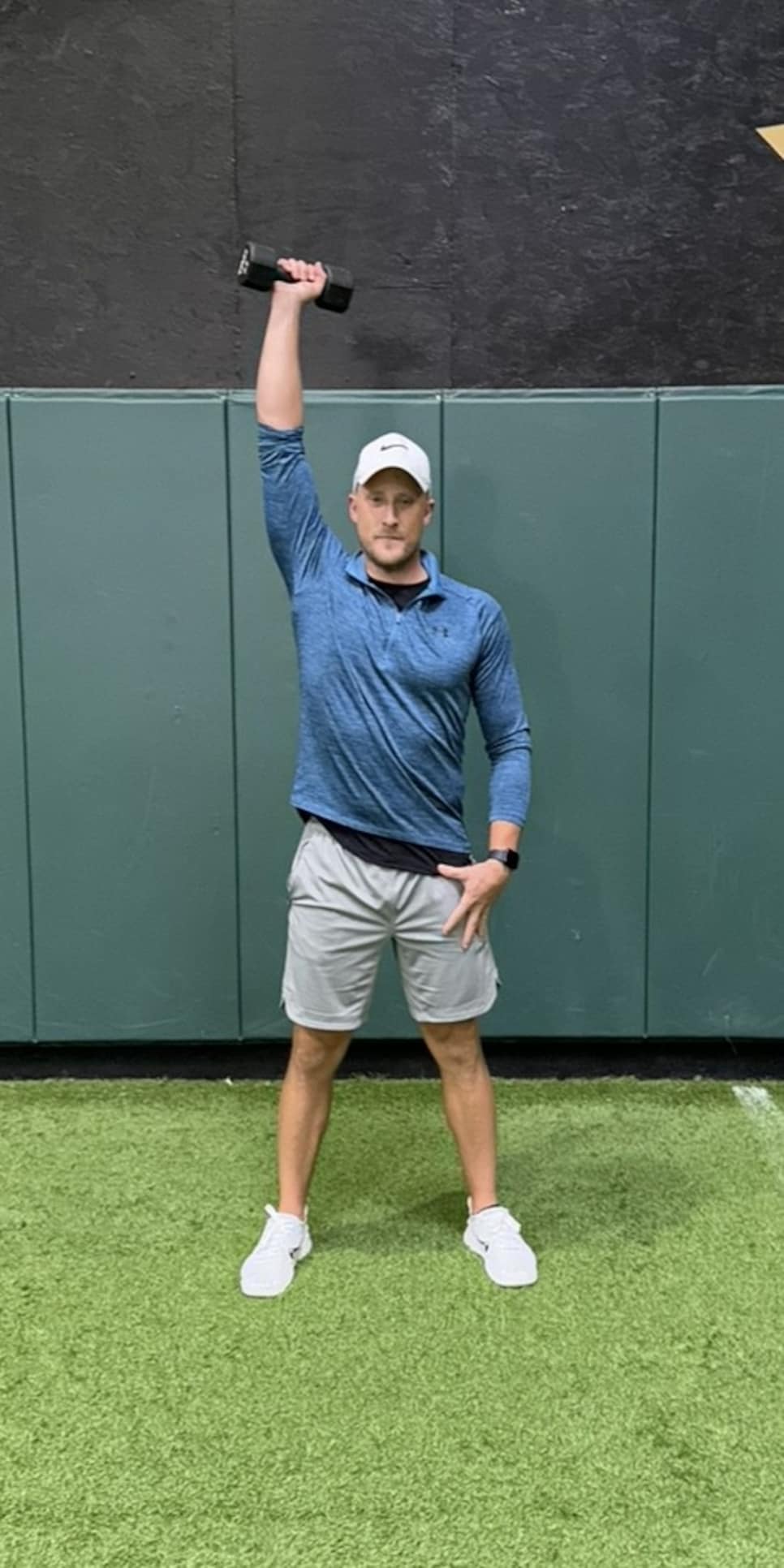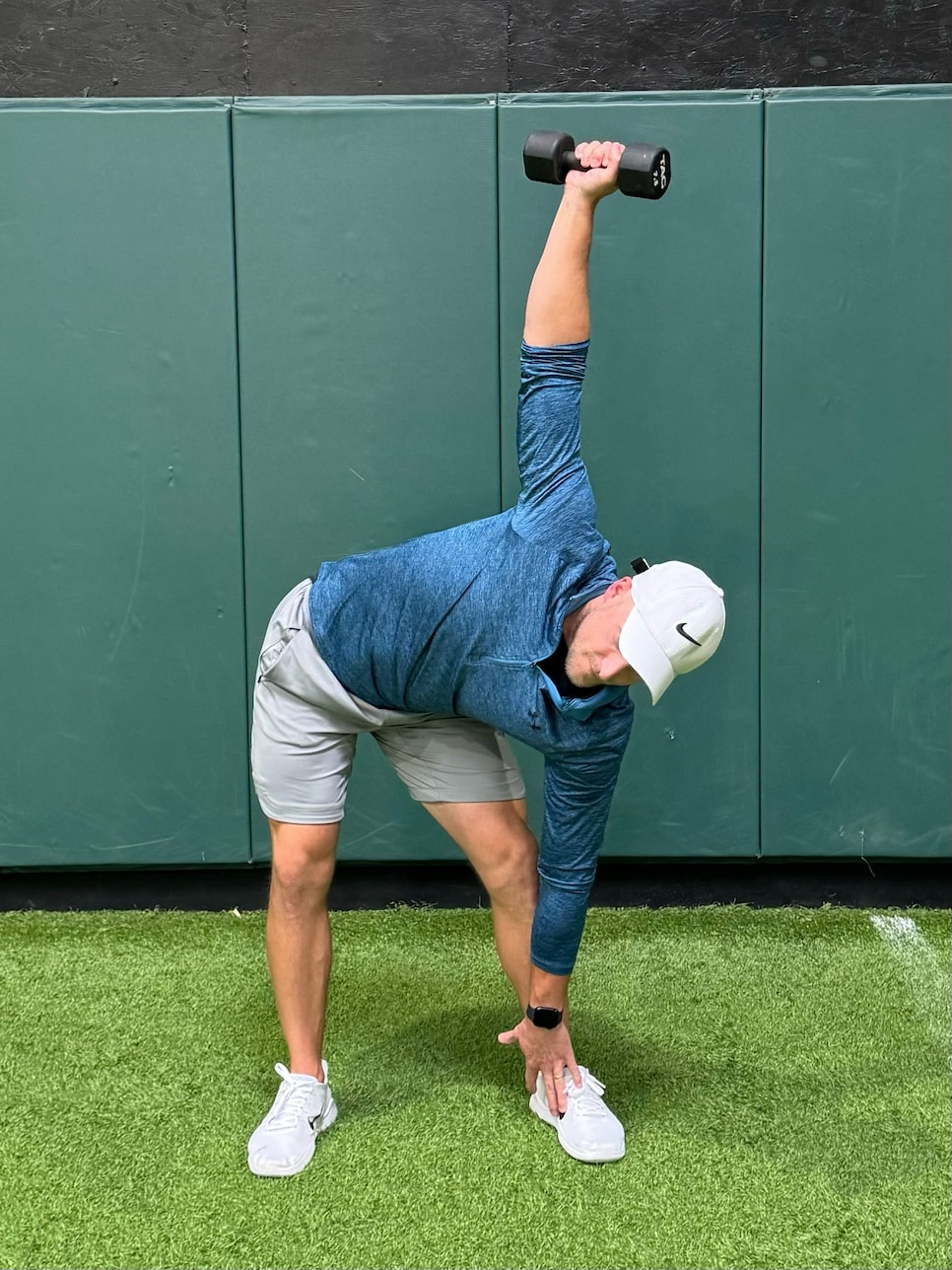[PHOTO: Michael Reaves]
Whenever a golfer lacks the ability to hit a particular shot, the initial thoughts go to an issue with swing mechanics and getting a lesson from an instructor to correct the problem. But what if the problem isn’t a lack of ability? What if you can’t hit a particular shot because your body won’t move in the way it should to execute it?
In the case of golfers who can’t hit high iron shots, a simple test will reveal if the problem is more about biomechanics than swing mechanics. But before we get to the test, here’s an interesting fact about how high the pros hit shots.
According to TrackMan, the average “apex height” of shots hit on the PGA Tour doesn’t change much from driver down to pitching wedge. Pros hit their shots in the 90-foot to 115-foot range (27 to 35 metres). Sure, they will lower their ball flight depending on conditions, but the ability to hit shots super-high is a real advantage. Players such as Scottie Scheffler, Jason Day [above], Rory McIlroy, Cameron Young and Wyndham Clark are known as high-ball hitters, which should tell you getting the ball up is a pretty important part of scoring.

Most golfers can get into a decent address posture over the ball, says Ben Shear, a Golf Digest chief fitness adviser. And most people can rotate their torsos back and forth while standing upright. “But can you rotate and maintain your address posture?” Shear asks. “If you can’t, this might be the main reason you hit a lot of fat and thin shots.”
The turn-and-tilt test 
To see if you can rotate your torso while maintaining your address position, sit with your torso upright. Hold a club across your chest so it’s parallel to the ground, and squeeze a pad between your knees. Flex forward, then side-bend and try to rotate your torso in either direction. You want a 45-degree turn (the shaft pointing between parallel and perpendicular to the ground) while maintaining a bent-over posture.
If you’re struggling, a focus in the gym should be exercises that incorporate lateral and rotational movements, challenging your obliques and other core muscles to move in different planes. The test above is a classic example of the type of movements you need to improve. But here are two other exercises to try from Golf Digest certified fitness trainer Kyle Wagley. Wagley says to do these exercises each time you hit the gym, making sure to do them in each direction/side. Reps and sets depend on your current fitness level, as does the weight of the dumbbell and tension in the resistance band, but Wagley has some recommendations.
Weighted standing windmills 

“Stand tall with feet shoulder width apart and hold a dumbbell directly overhead with one arm,” Wagley says. “Keeping the weight overhead, reach to the ground with your opposite hand and try to touch the inside of the opposite hand’s foot. Try to make a straight line, arm to arm, as you touch the foot. Do the movement under control and keep the weight stable and overhead the entire time.”
(3 sets, 6-8 reps each side. Start with light weight and work up from there as the movement becomes more fluid.)
Lunge holds with banded rotations

“Get into a half lunge position next to a wall with your upper body in golf posture while holding a resistance band with both hands in front of you. Take a mini foam roller or yoga block and squeeze it between your trail knee and the wall to help keep your lower body stable. Now rotate your upper body anti-clockwise as far as you can while extending the arm furthest from the wall upward and towards it. The goal is to keep your golf posture throughout the whole movement and feel your scapulas engaging as you rotate open. Squeezing the foam roller will keep you from swaying away from the wall and allow you to feel this movement from start to finish.”
(3 sets of 6-8 reps each side. Keep the band tension light.)

